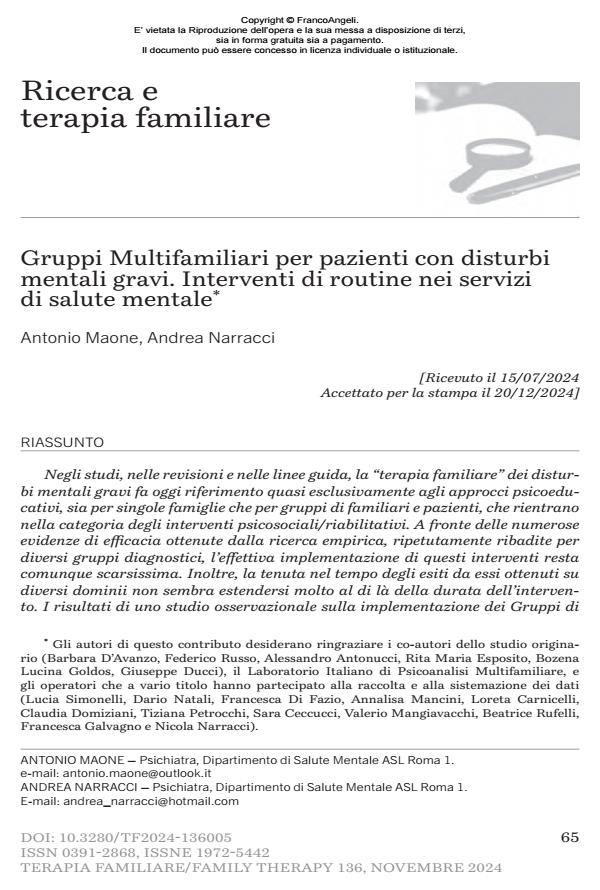Multifamily groups for patients with severe mental disorders. Routine interventions in mental health services
Journal title TERAPIA FAMILIARE
Author/s Antonio Maone, Andrea Narracci
Publishing Year 2025 Issue 2024/136
Language Italian Pages 14 P. 65-78 File size 630 KB
DOI 10.3280/TF2024-136005
DOI is like a bar code for intellectual property: to have more infomation
click here
Below, you can see the article first page
If you want to buy this article in PDF format, you can do it, following the instructions to buy download credits

FrancoAngeli is member of Publishers International Linking Association, Inc (PILA), a not-for-profit association which run the CrossRef service enabling links to and from online scholarly content.
In studies, reviews and guidelines, “family therapy” of severe mental disorders today refers almost exclusively to psycho-educational approaches, both for individual families and groups of family members and patients, which fall into the category of psychosocial/rehabilitation interventions. In spite of the numerous proofs of efficacy obtained from empirical research, repeatedly reiterated for various diagnostic groups, the actual implementation of these interventions is still very poor. Furthermore, the sustainability of the outcomes obtained from them over time on different domains does not seem to extend much beyond the duration of the intervention. The results of an observational study on the implementation of the Multi-Family Psychodynamic Groups in the Department of Mental Health of the Local Health Unit “Roma 1” (Rome, Italy), with a population of over one million inhabitants, briefly reported in this contribution, offer the opportunity to reflect on these critical aspects and to envisage new developments that focus, through a cultural rather than organizational transformation, on the long-term needs of patients and family members, guaranteeing continuity and flexibility, and whose systematic implementation can be achieved in every node of the mental health service network.
Keywords: community mental health, family interventions, psychoeducation, implementation, multifamily psychodynamic groups.
Antonio Maone, Andrea Narracci, Gruppi Multifamiliari per pazienti con disturbi mentali gravi. Interventi di routine nei servizi di salute mentale in "TERAPIA FAMILIARE" 136/2024, pp 65-78, DOI: 10.3280/TF2024-136005